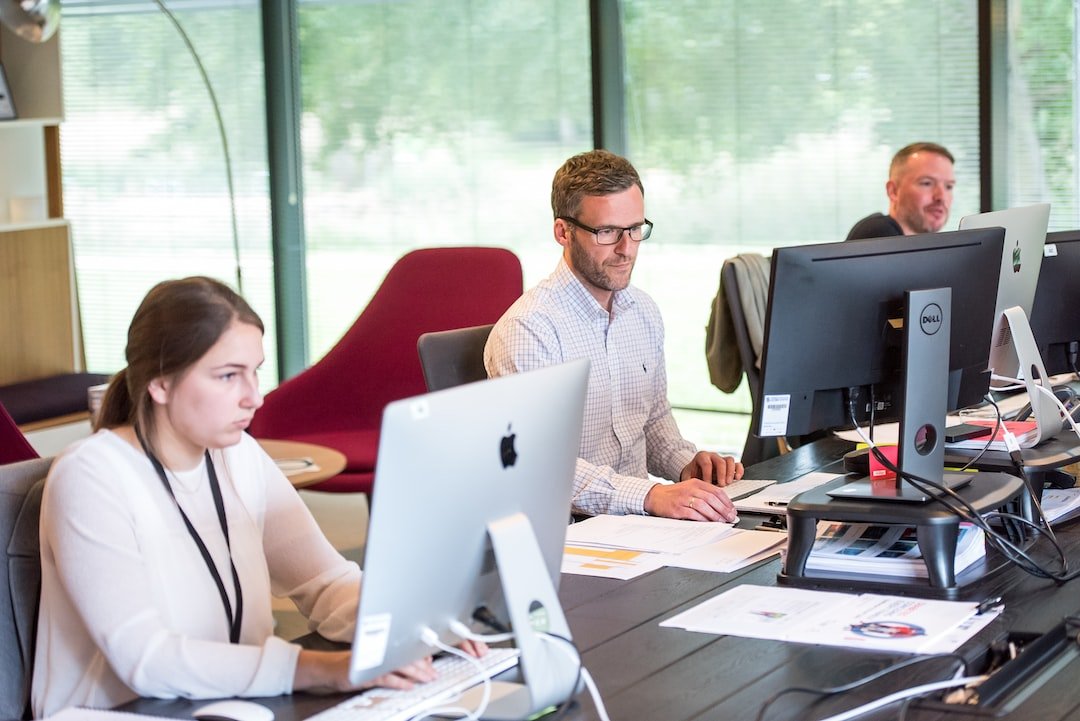
Creating a healthy work-life balance: Habits for productivity and self-care
Work-life balance refers to the equilibrium between one’s professional and personal life. It is the ability to effectively manage the demands of work while also prioritizing personal well-being and relationships. In today’s fast-paced and competitive world, achieving work-life balance has become increasingly challenging.
An imbalanced life can have detrimental effects on both physical and mental health. Chronic stress, burnout, and fatigue are common consequences of a lack of work-life balance. These can lead to a variety of health issues such as high blood pressure, heart disease, anxiety, and depression. Additionally, an imbalanced life can strain relationships with loved ones and hinder personal growth and fulfillment.
On the other hand, achieving work-life balance has numerous benefits. It allows individuals to have more time for self-care, relaxation, and pursuing hobbies and interests. It improves overall well-being, reduces stress levels, and enhances productivity and job satisfaction. By prioritizing work-life balance, individuals can lead happier, healthier, and more fulfilling lives.
Key Takeaways
- Work-life balance is important for overall well-being and productivity.
- Prioritizing self-care is crucial for achieving a healthy work-life balance.
- Setting clear boundaries between work and personal time helps maintain balance.
- Time management and mindfulness can increase productivity and awareness.
- Pursuing hobbies, building relationships, and practicing gratitude can bring fulfillment and support.
Prioritizing Self-Care: The Foundation of a Healthy Work-Life Balance
Self-care is the foundation of achieving work-life balance. It involves taking care of one’s physical, mental, and emotional well-being. Prioritizing self-care allows individuals to recharge, rejuvenate, and maintain optimal health.
There are various self-care activities that individuals can incorporate into their daily routine. These include getting enough sleep, eating a balanced diet, exercising regularly, practicing relaxation techniques such as meditation or yoga, spending time in nature, engaging in hobbies or activities that bring joy and fulfillment, and seeking support from loved ones or professionals when needed.
Making self-care a priority requires conscious effort and commitment. It involves setting boundaries with work and personal life, saying no to excessive demands or commitments that may interfere with self-care, and making time for activities that promote well-being. By prioritizing self-care, individuals can better manage stress, improve their physical and mental health, and ultimately achieve a healthy work-life balance.
Setting Boundaries: Establishing Clear Lines Between Work and Personal Time
Setting boundaries is crucial in achieving work-life balance. It involves establishing clear lines between work and personal time, and ensuring that one does not encroach upon the other. Without boundaries, work can spill over into personal life, leading to increased stress and a lack of time for relaxation and personal activities.
To set boundaries effectively, it is important to first identify one’s priorities and values. This will help determine what is most important in both work and personal life. It is then necessary to communicate these boundaries to colleagues, supervisors, and loved ones. This can be done through open and honest conversations, clearly stating expectations and limitations.
In addition to communication, it is important to establish routines and rituals that reinforce boundaries. For example, setting specific work hours and sticking to them, designating certain days or times for personal activities or family time, and creating physical or mental spaces that are dedicated solely to work or personal life.
By setting boundaries, individuals can create a healthy separation between work and personal life. This allows for better focus and productivity during work hours, as well as dedicated time for relaxation, self-care, and spending quality time with loved ones.
Time Management: Maximizing Productivity and Efficiency
Time management plays a crucial role in achieving work-life balance. It involves effectively allocating time to different tasks and activities in order to maximize productivity and efficiency. By managing time effectively, individuals can accomplish more in less time, leaving room for personal activities and relaxation.
There are various time management techniques and tools that can help individuals prioritize tasks and manage their time effectively. These include creating to-do lists or schedules, prioritizing tasks based on importance and urgency, breaking down large tasks into smaller manageable ones, delegating tasks when possible, and using technology or apps to track and manage time.
To prioritize tasks effectively, it is important to first identify goals and objectives. This will help determine what tasks are most important and need to be completed first. It is also important to eliminate or minimize time-wasting activities such as excessive social media use or unnecessary meetings.
By managing time effectively, individuals can reduce stress, increase productivity, and create more time for personal activities and relaxation. This ultimately leads to a healthier work-life balance.
Mindfulness: Cultivating Awareness and Presence in Everyday Life
Mindfulness is a powerful practice that can greatly contribute to achieving work-life balance. It involves cultivating awareness and presence in everyday life, paying attention to the present moment without judgment. By practicing mindfulness, individuals can reduce stress, improve focus and concentration, and enhance overall well-being.
There are various mindfulness techniques and practices that individuals can incorporate into their daily routine. These include meditation, deep breathing exercises, mindful eating, body scans, and mindful movement such as yoga or tai chi. These practices help individuals become more aware of their thoughts, emotions, and physical sensations, allowing them to respond to situations with greater clarity and calmness.
Incorporating mindfulness into daily life can be done by setting aside dedicated time for practice, such as a few minutes in the morning or before bed. It can also be integrated into everyday activities such as eating, walking, or even working. By bringing mindfulness into daily life, individuals can experience greater peace, joy, and fulfillment.
Exercise and Nutrition: Fueling Your Body and Mind for Optimal Performance

Exercise and nutrition are essential components of achieving work-life balance. They play a crucial role in fueling the body and mind for optimal performance. Regular exercise and a healthy diet not only improve physical health but also enhance mental well-being and productivity.
Engaging in regular exercise has numerous benefits. It reduces stress levels, improves mood, boosts energy levels, enhances cognitive function, and promotes better sleep. Exercise can take various forms such as walking, running, swimming, cycling, or participating in sports or fitness classes. Finding an activity that is enjoyable and fits into one’s schedule is key to making exercise a regular part of one’s routine.
In addition to exercise, maintaining a healthy diet is equally important. A balanced diet that includes a variety of fruits, vegetables, whole grains, lean proteins, and healthy fats provides the necessary nutrients for optimal physical and mental health. It is also important to stay hydrated by drinking enough water throughout the day.
Incorporating exercise and healthy eating habits into one’s routine requires planning and commitment. It may involve meal prepping, scheduling workouts in advance, or seeking support from a nutritionist or personal trainer. By prioritizing exercise and nutrition, individuals can improve their overall well-being, increase energy levels, and achieve a healthy work-life balance.
Disconnecting: Unplugging from Technology and Digital Distractions
Technology has become an integral part of our lives, both personally and professionally. While it offers numerous benefits and conveniences, it can also be a major source of distraction and imbalance in achieving work-life balance.
Constant connectivity through smartphones, laptops, and other devices can blur the lines between work and personal life. It can lead to a constant state of being “on” and make it difficult to disconnect and relax. This can result in increased stress levels, decreased productivity, and a lack of time for personal activities or relationships.
To achieve work-life balance, it is important to create boundaries with technology use. This can be done by setting specific times or days when technology is off-limits or limiting the use of certain apps or notifications. It is also important to establish technology-free zones or activities such as meal times or before bed.
Creating boundaries with technology use requires discipline and commitment. It may involve setting specific rules or guidelines for oneself, as well as communicating these boundaries to colleagues, supervisors, and loved ones. By disconnecting from technology and digital distractions, individuals can create more time for relaxation, personal activities, and meaningful connections.
Hobbies and Interests: Pursuing Activities Outside of Work for Fulfillment and Joy
Pursuing hobbies and interests outside of work is essential for achieving work-life balance. Engaging in activities that bring joy and fulfillment allows individuals to recharge, explore new passions, and find a sense of purpose outside of their professional life.
Finding and pursuing hobbies and interests can be a fun and rewarding process. It involves exploring different activities, trying new things, and discovering what brings joy and fulfillment. Hobbies can range from creative pursuits such as painting or playing a musical instrument, to physical activities such as hiking or dancing, to intellectual pursuits such as reading or learning a new language.
Making time for hobbies and interests requires prioritization and commitment. It may involve scheduling dedicated time for these activities, joining clubs or groups that share similar interests, or seeking out opportunities to learn and grow in these areas. By pursuing hobbies and interests, individuals can experience greater fulfillment, happiness, and a more balanced life.
Social Support: Building Strong Relationships and Networks for Emotional Support
Social support is a crucial component of achieving work-life balance. Building strong relationships and networks provides emotional support, encouragement, and a sense of belonging. It helps individuals navigate challenges, reduce stress levels, and enhance overall well-being.
Building and maintaining strong relationships requires effort and investment. It involves reaching out to loved ones regularly, spending quality time together, actively listening and supporting one another, and being there in times of need. It also involves seeking out new connections through networking events or joining groups or organizations that share similar interests or values.
In addition to personal relationships, it is important to build professional networks that provide support and mentorship. Connecting with colleagues, attending industry events, and participating in professional development opportunities can help individuals feel supported and connected in their work life.
By building strong relationships and networks, individuals can experience a sense of belonging, emotional support, and a greater sense of work-life balance.
Reflection and Gratitude: Taking Time to Appreciate Your Accomplishments and Life’s Blessings
Reflection and gratitude are powerful practices that contribute to achieving work-life balance. Taking time to appreciate one’s accomplishments and life’s blessings helps cultivate a positive mindset, reduce stress levels, and enhance overall well-being.
Practicing reflection involves taking time to review one’s achievements, lessons learned, and areas for growth. It can be done through journaling, meditation, or simply taking a few moments each day to reflect on the day’s events. Reflection allows individuals to gain perspective, learn from past experiences, and make adjustments for the future.
Gratitude involves acknowledging and appreciating the blessings in one’s life. It can be practiced by keeping a gratitude journal, expressing gratitude to loved ones or colleagues, or simply taking a moment each day to reflect on what one is grateful for. Gratitude helps shift focus from what is lacking to what is present, fostering a sense of contentment and fulfillment.
By practicing reflection and gratitude, individuals can cultivate a positive mindset, reduce stress levels, and enhance overall well-being. This ultimately contributes to achieving a healthy work-life balance.
Achieving work-life balance is essential for overall well-being and productivity. By prioritizing self-care, setting boundaries, managing time effectively, practicing mindfulness, exercising and eating well, disconnecting from technology, pursuing hobbies and interests, building social support, and practicing reflection and gratitude, individuals can achieve a healthy work-life balance. It requires conscious effort and commitment but the benefits are well worth it. By achieving work-life balance, individuals can lead happier, healthier, and more fulfilling lives.
If you’re looking for more tips on creating a healthy work-life balance and cultivating habits for productivity and self-care, you might find this article from Wave Magnets helpful. Wave Magnets is a website dedicated to personal development and well-being, offering valuable insights and practical advice. Their article, “Mastering the Art of Work-Life Balance: 7 Essential Habits to Thrive,” provides actionable strategies to help you achieve harmony between your professional and personal life. Check it out here for a deeper dive into this important topic.


















